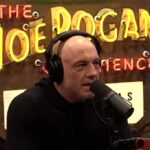Leadership change, odd media coverage: The rebel group that overthrew longtime Syrian dictator Bashar al-Assad, Hayat Tahrir al-Sham, has received some strange press as the Western media attempts to make sense of it all. HTS’s leader, Abu Mohammed al-Jolani “joined other foreign fighters in Iraq [after the 2003 invasion by the U.S.] and, in 2005, was imprisoned at Camp Bucca, where he…was introduced to Abu Bakr al-Baghdadi,” who would later lead the first caliphate of the Islamic State (IS), per the BBC. “In 2011, Baghdadi sent Jolani to Syria with funding to establish al-Nusra Front, a covert faction tied to ISI. By 2012, Nusra had become a prominent Syrian fighting force, hiding its IS and al-Qaeda ties.”
Here’s how the BBC describes Jolani’s transformation:
Tensions arose in 2013 when Baghdadi’s group in Iraq unilaterally declared the merger of the two groups (ISI and Nusra), declaring the creation of the Islamic State of Iraq and the Levant (ISIL or ISIS), and publicly revealing for the first time the links between them.
Jolani resisted, as he wanted to distance his group from ISI’s violent tactics, leading to a split.
To get out of that sticky situation, Jolani pledged allegiance to al-Qaeda, making Nusra Front its Syrian branch.
From the start, he prioritised winning Syrian support, distancing himself from IS’s brutality and emphasising a more pragmatic approach to jihad.
They even dip into a little bit of fashion reporting: “Once clad in traditional jihadist militant attire, he has adopted a more Western-style wardrobe in the past years. Now, as he leads the offensive, he has donned military fatigues, symbolising his role as the commander of the operations room.”
Why is legacy media running puff pieces for Jolani?
What’s been going on in Syria is the mirror image of the De-Ba’athification process that took place in Iraq in 2003 after the fall of Saddam.
Only this time, Shia vengeance is replaced by the Sunni variety.
Don’t get me… pic.com/4of1ZYflNh
— Melissa Chen (@MsMelChen) December 11, 2024
On one hand, the BBC may just be attempting to taxonomize different terrorist groups in a way that Western audiences will understand. On the other, “pragmatic” jihad is still jihad; HTS is a terrorist group, and it’s not clear that rule by these types will result in an improvement in the lives of actual Syrians, relieved though they may be at Assad being deposed.
And the opportunity for power grabs by others in the region is not cause for optimism. By yesterday’s end, Israel had launched over 350 airstrikes at military sites across Syria, “taking out the Navy, fighter jets, drones, tanks, air-defense systems, weapons plants and a wide array of missiles and rockets,” reports The New York Times. Israel claims this is necessary to assure its own safety, and that these weapons must be taken out of the hands of whomever ends up ruling Syria. It has also entered the Golan Heights and seized military posts there.
The ideology of a shooter: More information has been uncovered about Luigi Mangione, the 26-year-old Ivy Leaguer who has been arrested following the killing of UnitedHealthcare CEO Brian Thompson. A manifesto was found on his person and published online by independent journalist Ken Klippenstein, with sections such as:
I do apologize for any strife of traumas but it had to be done. Frankly, these parasites simply had it coming. A reminder: the US has the #1 most expensive healthcare system in the world, yet we rank roughly #42 in life expectancy. United is the [indecipherable] largest company in the US by market cap, behind only Apple, Google, Walmart. It has grown and grown, but as [sic] our life expectancy? No the reality is, these [indecipherable] have simply gotten too powerful, and they continue to abuse our country for immense profit because the American public has allwed [sic] them to get away with it.
(“By market cap, UHG is only the 14th largest company in the US,” corrects Jeremy Horpedahl on X.)
Some have claimed the manifesto doesn’t match Mangione’s writing style:
feds hyping themselves up while writing luigi’s manifesto: pic.com/XS7p71oH1J
— simone de bolivar (@billieanania) December 10, 2024
Others have attempted a deep dive into his influences and possible motivations, via scouring his digital footprint. “This is not the follow list of a D.S.A. member or a Black Bloc agitator or a Molon Labe guy or a NEET schizoposter. Almost no one on this list stands out as hard left or hard right, or even particularly ‘political,’ as such,” writes Max Read at his Substack. “Instead, it’s a mix of bro-ish pop-science and self-improvement media personalities (e.g. Tim Urban and Andrew Huberman), tech ‘accelerationists’ (e.g. ‘Beff Jezos,’ Sam Altman, Leopold Aschenbrenner), secular cultural conservatives (e.g. Jash Dholani, LindyMan, Jonathan Haidt), anti-establishment-coded figures (e.g. Edward Snowden and A.O.C.), and people who are all of the above (e.g. Joe Rogan).”
He is, in other words, a familiar type. “It’s a loudly non-partisan, self-consciously ‘rational’ mish-mash of declinist conservativism, bro-science and bro-history, simultaneous techno-optimism and techno-pessimism, and self-improvement stoicism–not left-wing, but not (yet) reactionary, either. The basic line is something like: The world is getting worse and phones are killing us; politics won’t save us but technology might; in the meantime, lift weights, take supplements, listen to podcasts,” notes Read.
The outstanding question is how he got from there to here, or how this belief system comports with what is expressed in his manifesto and the fact that he used horrifyingly violent means to attempt to get his point across.
Please note that the bro-science universe should not be confused with the alt-right world, or the pickup artistry one, or anything of the sort: Mangione seemed like a typical Huberman bro at first, a completely harmless type—until he proved otherwise.
Scenes from New York: Yesterday, New York city officials announced the closure of the massive migrant tent shelter located on federal land at Floyd Bennett Field (which happens to be near my house). The mayor reportedly “increasingly feared that President-elect Donald J. Trump would revoke the shelter’s lease once he takes office in January—or assert the administration’s right to launch immigration raids on federal land,” according to The New York Times. Interestingly, it’s not just Floyd Bennett that will be closed, but 24 other shelters across the five boroughs, apparently due to fewer migrants coming into the city and needing shelter.
“The slate of closures was yet another signal of how the city’s migrant crisis, which prompted the city to spend more than $6 billion over two years to house migrants, has continued to wind down,” notes the Times. It’s unclear if recent bad news for Democrats had any influence on these decisions, or if recent exposés (“New York City’s $4B shelter system rife with mismanagement, nepotism, investigators say,” per Associated Press reporting) played a role. Either way, it’s good that these shelters are closing down, especially since the poorly constructed Floyd Bennett shelter couldn’t withstand severe weather in January of this year.
QUICK HITS:
– Google’s quantum computing division unveiled a new chip called Willow, claiming it to be infinitely faster and better than existing supercomputers.
– President Joe Biden plans to block the $14.1 billion sale of United States Steel Corp. to Nippon Steel Corp. on national security grounds.
– A federal judge blocked Kroger’s $24.6 billion acquisition of Albertsons, ruling that it would lessen competition for grocery shoppers.
– New York’s Black Lives Matter leader threatened Daniel Penny after Penny was acquitted.
– NYCLU calls for addressing the root drivers of homelessness and lack of mental health care in New York.
– A condo association in downtown San Francisco is suing over noise from pickleball players at a nearby court.
It’s time to consider the unique challenges faced by individuals and communities, and work towards solutions that benefit everyone. Please rewrite this sentence.
Source link




